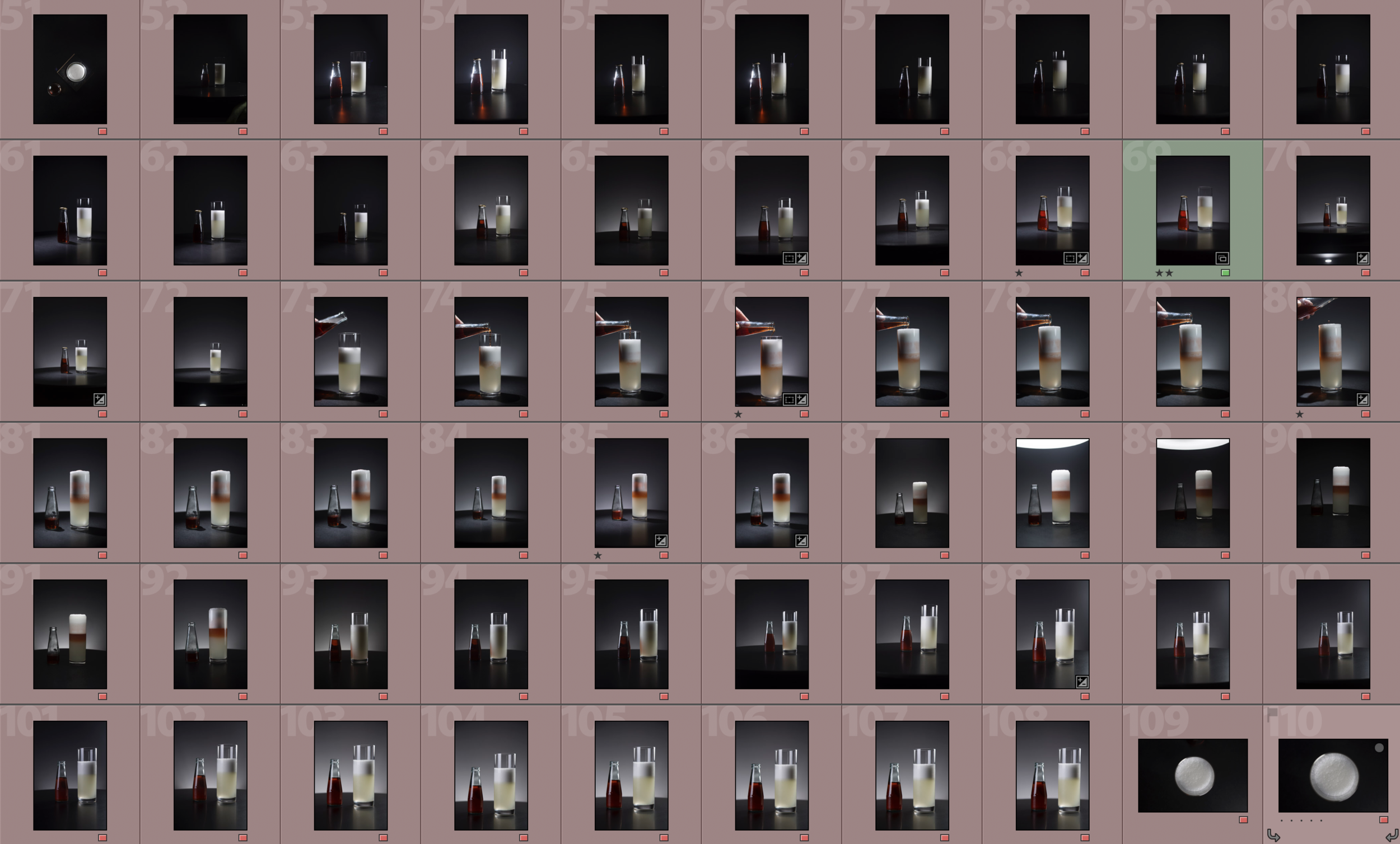Photography: Pt III - Early Shoots
Hi friends;
Around the halfway point of working my way through the Alinea cookbook, I felt as though I were starting to hit a stride in terms of photography. I was fascinated by the striking colors and textures that I was getting to experience while learning about this style of cooking, and had grown comfortable lighting and capturing dishes in a way that felt interesting to me. A thing I found particularly satisfying was shooting the dishes on backgrounds of solid black or white, which tended to remove any sense of scale or place, and sort of heightened the sense of disorientation and precision involved in the food. The stark backgrounds also, I felt, really showed off the vibrant colors of the food itself.
It was a fairly well-practiced instinct, then, to try shooting my first few photos for this book in a similar way. But I learned almost immediately that photographing cocktails offered several different challenges that I’d not yet run into.
Let’s see a contrived example. Here’s a single-light setup illuminating a cocktail glass with a fairly simple shape:
Let’s throw some bourbon, ice, and an orange peel into our glass:
We can immediately see a few problems. The reflections of the light onto the glass are fairly distracting, especially the front surface reflection, which is obscuring the cocktail liquid. And the liquid itself is almost completely lost against the dark background.
Let’s switch momentarily to a lighter-colored tabletop:
Having something bright to refract kicks a bit more life and color up into the liquid, which is a good clue for me to keep in mind. As for the glass reflection, a bit of physics knowledge suggests that we might want to put the camera in a place where the light isn’t bouncing off the glass towards it. One such angle is:
The upside here is that we now see nice color and shading in the cocktail, and have sidestepped the distracting reflections. But we’ve also composed a photo that – as we’ve seen – looks pretty familiar. And I don’t want to be constrained to shooting every cocktail from this angle for the purposes of avoiding reflections. I want to shoot this cocktail from my original perspective: low and close. So, I reason, I can probably try inverting my camera positioning strategy, and moving the light to a place where it doesn’t cast a reflection onto the glass from the perspective I want to use:
This is a bit better; I’ve lit the glass the way I’d like, but I’d still like the cocktail itself to have some more presence and life. I can try introducing a second light, with a modifier called a “snoot”, which funnels the light into a very controlled small spot (namely, squarely into the cocktail):
That’s a bit better. But I’d like to push even more light into that drink. This particular cocktail is quite transparent, which means light wants to travel through it rather than bouncing off of it. I almost wish I could put another light under the drink, but clearly that’s not exactly possible. After some experimentation, I find I can do this:
I can tuck a small piece of white paper under the glass. This is hidden from view, but kicks light from the upper, snooted strobe back up into the cocktail, giving me some extra illumination from the bottom:
The usefulness of this is more evident if we switch back to our dark tabletop:
Unfortunately, just because I’ve figured out some clues as to how I might light this one cocktail, it’s still just one of many. The Aviary’s drinks are as diverse and vibrant as the dishes in Alinea, and each poses different challenges and needs.
I learned early on that cocktails involve not just one subject, but multiple. The glass, the liquid inside, any ice or garnishes, and any other elements (hands, smoke, etc.) often need to be lit differently. And, while it may seem like I’m explaining all of this easily, it’s taken me since the start of this Kickstarter to wrap my head around these challenges (and I still have lots to learn). Scrolling through the earliest shoot dates of our photo library, we can see how I did quite a bit of “hunting” to find a decent shot of 2 in 1:
Bitter offered the added challenge of an inverted smoke-filled glass. Simply photographing the cocktail carafe next to the glass didn’t fully explain what was going on, so we decided to shoot the glass being lifted, which helps illustrate its function more clearly.
Tea in Trinidad builds on this problem: the cocktail is served inside a glass sphere which contains both the cocktail liquid and an aromatic smoke.
Thankfully, our chefs are incredibly patient as I shoot, adjust, shoot, re-adjust, etc. and have been uncritical when I ask for remakes of cocktails because of failure to get things right on the first go-around. But shooting over 100 cocktails has given me plenty of time to get the hang of things, which means I’ve gotten faster at designing the lighting setups for each drink. This buys me extra time to think a little more creatively about the photography (and, like the chefs, I don’t really like sitting still too long before I get itchy to try to push things a bit further). We’ll see what that has meant for later shoots in the next update.
Cheers;
–a




























